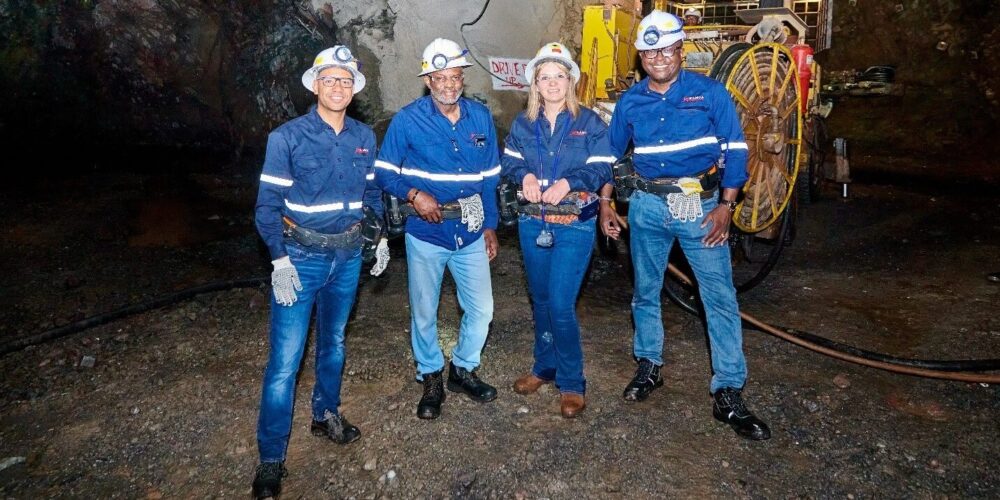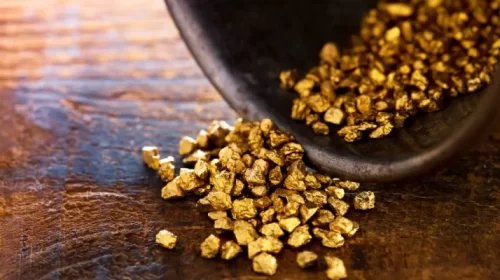Ivanhoe Mines and Gécamines Ink Deal to Revive Kipushi Mine After a Century
Construction of new concentrator and underground development well ahead of schedule for first production in Q2 2024
Kipushi expected to produce more than 250,000 tonnes of zinc annually over first five years
New Kipushi commercial border crossing and bypass road to unlock value for Kipushi and Kamoa-Kakula
Kipushi, Democratic Republic of Congo, Ivanhoe Mines Executive Co-Chair Robert Friedland and President Marna Cloete, together with Chairman Guy-Robert Lukama Nkunzi and General Manager Placide Nkala Basadilua of Gécamines, the Democratic Republic of Congo’s state-owned mining company, are pleased to announce today the signing of the new joint venture agreement to restart the ultra-high-grade Kipushi zinc-copper-germanium-silver mine.
In addition, Ivanhoe is pleased to provide an update on the restart of Kipushi, with both surface construction activities and underground development tracking ahead of schedule for first production, expected in the second quarter of 2024.
The signing of the new joint venture agreement heralds the beginning of a new era of production for the Kipushi Mine, which will resume operations one hundred years after first opening in 1924 as the world’s richest copper mine.
Gécamines’ Chairman, Guy-Robert Lukama Nkunzi, commented:
“The relaunch of the Kipushi mine is a source of pride for all of Gécamines’ employees, the local communities of Kipushi town, the Haut-Katanga Province as well as our country as a whole.
The restart of operations of a mine as emblematic as Kipushi, after 30 years of inactivity, is a strong signal of the desire and commitment of Gécamines, and its partner Ivanhoe Mines, to contribute to the DRC’s economic development, in accordance with the vision outlined by His Excellency, the President of the Republic Félix-Antoine Tshisekedi Tshilombo.
“Thanks to this agreement, Gécamines will immediately increase its stake in KICO to 38%, then to 43% in 2027, strengthening its position in the joint venture.
More importantly, Gécamines working alongside its world-class partner, will unlock the substantial potential of this unique, ultra-high-grade zinc deposit, with notable quantities of germanium, copper and other metals critical for global growth.
“The successful development of Kipushi will create prosperity on many levels. We will be creating local employment and developing the local economy, and we will also structurally strengthen Gécamines and the Democratic Republic of Congo, placing them on the world stage for the production of strategic minerals.”
Ivanhoe Mines’ Founder and Executive Co-Chairman, Robert Friedland, commented:
“We are delighted to execute the joint-venture agreement with our long-term partners at Gécamines.
Together we will make Kipushi great again! Kipushi is an extraordinary mineral endowment, holding not only the world’s richest zinc orebody, but also significant quantities of copper, lead, silver, germanium and gallium.
Kipushi is another great example of the unparalleled opportunities in the DRC for mineral development.
There is no better place on our planet to build a mine. This makes the Central African Copperbelt and high-grade mines, like Kipushi and Kamoa-Kakula, strategically important worldwid especially in light of the increasing fragmentation of supply chains and the growing demand for low-carbon-intensive strategic minerals.
“We would like to commend the dedicated Kipushi team, our joint-venture partner Gécamines, and the hardworking Congolese people for their exceptional contributions towards restarting this historic mine.
The project is advancing ahead of schedule, in line with our track record of operational excellence.
Kipushi’s restart follows the timely and cost-effective delivery of Phases 1 and 2 at the Kamoa-Kakula Copper Complex, with Phase 3 now also ahead of schedule for first production in the third quarter of 2024.”
Highlights of the joint-venture agreement between Kipushi Holding, Gécamines and KICO
As announced on February 14, 2022, Gécamines, Kipushi Holding and Kipushi Corporation (KICO) signed a term sheet to return the Kipushi Mine to commercial production. The agreement has now been fully executed.The terms are unchanged from the original transaction and are summarized below:
Upon completion of conditions precedent of the full agreement, Kipushi Holding, a 100%-owned subsidiary of Ivanhoe Mines, transfers to Gécamines an additional 6% of the share capital and voting rights in KICO. As a result, Gécamines’ ownership in Kipushi Holding increases from 32% to 38%.
From January 25, 2027, an additional 5% of the share capital and voting rights in KICO shall be transferred from Kipushi Holding to Gécamines, further increasing Gécamines’ ownership to 43%.
Kipushi Holding would retain its 57% ownership in KICO in the event that part of KICO’s share capital is required to be transferred to the DRC State or any third party, pursuant to an applicable legal or regulatory provision. Therefore, Gécamines would transfer any KICO shares required.
Throughout the exploitation of the Big Zinc, estimated at 12 years, Gécamines will have the option to purchase and locally process the concentrate produced by KICO.
Once a minimum of the current proven and probable reserves and up to 12 million tonnes have been mined and processed, an additional 37% of the share capital and voting rights in KICO shall be transferred from Kipushi Holding to Gécamines.
After which, Kipushi Holding and Gécamines will hold 20% and 80%, respectively.
A new supervisory board and executive committee, with appropriate shareholder representation, is in the process of being established.
New initiatives will be implemented focusing on the development of Congolese employees, including individual development, the identification of future leaders, succession planning and the promotion of gender equality across the workforce.
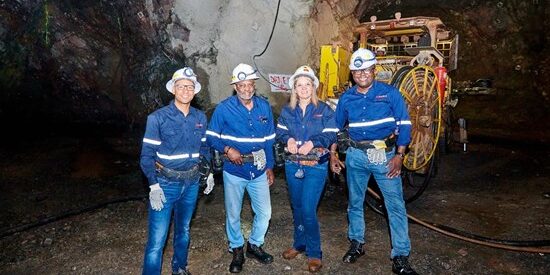
(L-R) Olivier Binyingo, SVP Public Affairs DRC, Ivanhoe Mines; Placide Nkala Basadilua, GM, Gécamines; Marna Cloete, President, Ivanhoe Mines, and; Guy-Robert Lukama Nkunzi, Chairman, Gécamines.
Dedicated Kipushi commercial border crossing to unlock direct export and import access to Zambia
The Kipushi Mine is adjacent to the border town of Kipushi, approximately 30 kilometres southwest of Lubumbashi on the DRC Copperbelt. Kipushi is approximately 250 kilometres southeast of the Kamoa-Kakula Copper Complex and less than one kilometre from the Zambian border.
The commercial border crossings at Kasumbalesa and Sakania, also in Haut-Katanga province, handle most of the DRC Copperbelt’s imports and exports (see Figure 1).
Ivanhoe Mines has been engaging with the provincial government of Haut-Katanga on a new commercial DRC-Zambia road border crossing at the town of Kipushi.
In 2023, a series of study options were presented and reviewed by the provincial government of Haut-Katanga and the national authorities in the DRC.
Support was received to create a new one-stop border post on the southern edge of Kipushi town within the DRC. The new border infrastructure is expected to consist of a staging area and administration building on both the DRC and Zambian sides of the border.
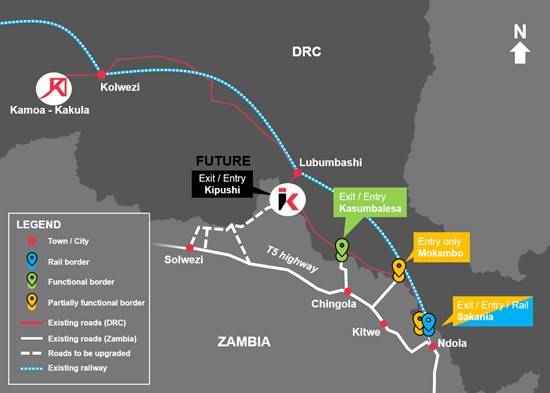
Figure 1. Map of the current and planned commercial DRC-Zambia road border infrastructure used by the DRC Copperbelt for exporting mineral products
The appointment of the road-building contractor, by the Haut-Katanga province, has also been made. The contractor will construct the 13-kilometre sealed, bypass road around the town of Kipushi that will connect the existing N37 main road to the Kipushi site. Mobilization of the construction contractor is expected to commence imminently.
Ivanhoe Mines has entered into an agreement with the Province of Haut-Katanga to both fund and joint-manage the construction of the bypass road.
Concurrently, work is underway by the Zambian government to upgrade roads for commercial traffic on the Zambian side of the border, connecting the T5 highway to the new commercial Kipushi border (see Figure 1).
Upgrades have commenced on some sections of road, with further infrastructure upgrades and all-weather proofing planned over the coming year.
A new commercial DRC-Zambia border crossing at Kipushi will not only benefit the Kipushi Mine, but also Kamoa-Kakula as an additional route for exports.
In addition, the border crossing will provide socio-economic benefits to the community of Kipushi and the city of Lubumbashi, the capital of Haut-Katanga province, which is approximately 30 kilometres north-east.
Off-take and financing discussions to be concluded this quarter
Following the April 27, 2023 announcement regarding an off-take and financing facility term sheet with Glencore, Ivanhoe has received significant additional interest in relation to the financing of Kipushi and off-take of zinc concentrate.
Negotiations are advancing with numerous parties, including facilities of $200 million or higher, and are expected to be concluded during this quarter, prior to the commencement of production in the second quarter.
The remaining initial capital for the Kipushi Project was approximately $240 million as at September 30, 2023, which will be funded by such facilities, with any shortfall covered by additional shareholder loans from Ivanhoe Mines.
New Kipushi concentrator is 79% complete and ahead of schedule for first production in Q2 2024
The new 800,000-tonne-per-annum concentrator includes dense media separation, milling and a flotation circuit, and is expected to produce more than 250,000 tonnes of zinc per annum over the first five years of production.
Design recoveries are targeted at 96%, with a concentrate grade averaging 55% contained zinc. The project is 79% complete and is tracking ahead of schedule, with commissioning expected to take place in the second quarter.
Detailed engineering, procurement and fabrication activities are now all complete, and ahead of schedule. All major equipment has also been delivered to site, including the ball mill fabricated by CITIC Heavy Industries of Henan Province, China, the dense media separation (DMS) plant fabricated by Bond Equipment in Gauteng, South Africa, and the flotation cells by FL Smidth of Copenhagen, Denmark. All mechanical and electrical equipment packages are in the process of completing onsite installation and testing, with the final few truck deliveries of equipment expected later this month.

The construction team celebrate the lowering of Kipushi’s ball mill shell into place. The ball mill was fabricated by CITIC Heavy Industries.
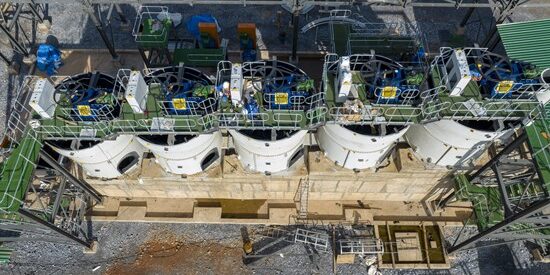
Bird’s eye view of the installed flotation cells, fabricated by FL Smidth. All long-lead order equipment items have been delivered to site and are in the process of being installed.
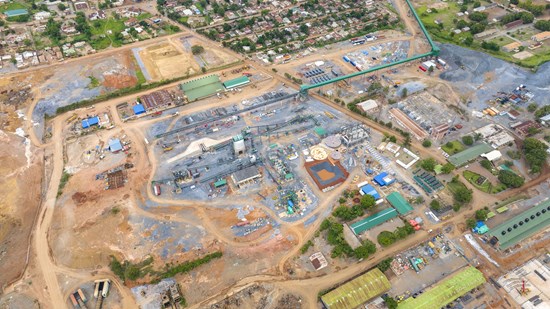
Aerial view of the Kipushi concentrator construction site, with the run-of-mine (ROM) overland feed conveyor (top of picture in green) from the nearby P5 shaft to the ROM stockpile area.
The 800,000 tonnes-per-annum concentrator is tracking ahead of schedule at 79% complete, with first production expected in Q2 2024.
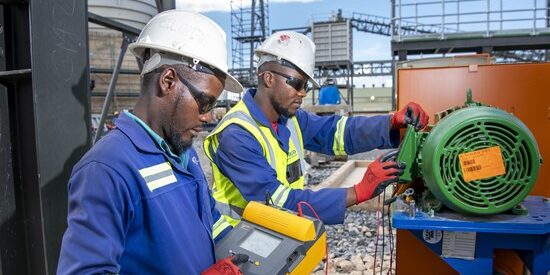
(L-R) Gloire Kumwimba and Mojej Mbuya, Electrical Quality Controllers of Panaco SARL, conducting electrical testing of a motor prior to installation.
Underground development ahead of schedule, with over 4,500 metres of lateral and decline development completed since September 2022
In line with the 2022 Kipushi Feasibility Study, mining will focus on the zinc-rich Big Zinc and Southern Zinc zones, with an estimated 11.8 million tonnes of Measured and Indicated Mineral Resources grading 35.3% zinc.
Kipushi’s exceptional zinc grade is more than twice that of the world’s next-highest-grade zinc project, according to Wood Mackenzie, a leading, international industry research and consulting group.
In the first quarter of 2023, the underground mining contractor was appointed, and the subsequent phased on-site mobilization of mining crews and equipment was completed during the fourth quarter.
The primary mining fleet is supplied by Epiroc of Stockholm, Sweden. Following the complete mobilization in the fourth quarter of the underground equipment fleet, as well as the development crews, the current underground development rate is approximately 400 metres per month.
The underground mining operation is fully mechanized, highly efficient and designed to enable a quick ramp-up to steady state. The underground mining team consists of four mining crews.
Each mining crew is made up of five miners per shift and equipped with a primary fleet consisting of an Epiroc 282 Twin Boomer, a ST 14 Scooptram (LHD) and two MT42 dump trucks.
In addition, Simba long-hole drill rigs have been deployed for stope production and have commenced long-hole drilling for stoping.
Stoping of ultra-high-grade Big Zinc orebody started ahead of schedule
The mining method of the Big Zinc orebody is transverse sublevel open stoping, with high-grade ore extracted from the stopes in a primary and secondary sequence. The void of the mined-out stopes will be filled with cemented aggregate to maximize the extraction of the ultra-high-grade ore.
The height of each long-hole stope is approximately 60 metres, comprising an upper 30-metre-high stope and a lower 30-metre-high stope. Stopes will be separated by a 15-metre-high sill pillar.
The long-hole stopes will be mined with a bottom-up mining sequence, with the lower stope extracted first followed by the upper stope.
Underground development is taking place concurrently on multiple access levels around the Big Zinc orebody. Perimeter and access drives are under development on the 1,335-metre and 1,365-metre levels, concurrently with the profiling of the stope drill and extraction drives into the Big Zinc orebody.
In addition, stope extraction drives (used for accessing and extracting blasted ore from the stopes) and stope drill drives are being developed on the 1,260-metre, 1,290-metre and 1320-metre levels inside the Big Zinc orebody.
Stoping (mining) of Kipushi’s ultra-high-grade Big Zinc orebody commenced in December. Stoping started on a trial-mining basis to complete the training of the underground mining crews in preparation for the commencement of commercial operations this quarter. Ore will be stockpiled on surface adjacent to the concentrator ahead of commissioning in the second quarter.
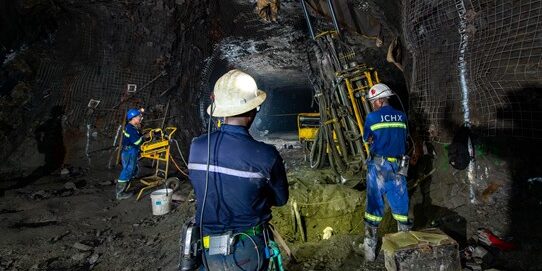
A remotely-operated Simba 1354 longhole drill rig, with its remote operator (left), drilling the stope slot holes on the 1,220-metre level in preparation for a blast of the trial mining stope. Approximately 4,000 metres of underground development was completed in 2023, almost 20% ahead of schedule.
The re-birth of a mining legend; Kipushi is a significant past producer of copper, zinc, germanium and precious metals
Kipushi has a long and storied history as a major producer of copper and zinc. Built and then operated by Union Minière for 42 years, Kipushi began mining a reported 18% copper deposit from a surface open pit in 1924.
It was the world’s richest copper mine at the time. The Kipushi Mine then transitioned to become Africa’s richest underground copper, zinc and germanium mine.
State-owned Gécamines gained control of Kipushi in 1967 and operated the mine until 1993 when it was placed on care and maintenance due to a combination of economic and political factors.
Over 69 years, Kipushi produced a total of 6.6 million tonnes of zinc and 4.0 million tonnes of copper from 60 million tonnes of ore grading 11% zinc and approximately 7% copper.
It also produced 278 tonnes of germanium and 12,673 tonnes of lead between 1956 and 1978. There is no formal record of the production of precious metals as the concentrate was shipped to Belgium and the recovery of precious metals remained undisclosed during the colonial era; however, drilling by Ivanhoe Mines has encountered significant silver values within Kipushi’s current zinc- and copper-rich deposits.
Since acquiring its interest in the Kipushi Mine in 2011, Ivanhoe’s drilling campaigns have upgraded and expanded the mine’s zinc-rich Measured and Indicated Mineral Resources to an estimated 11.78 million tonnes grading 35.34% zinc, 0.80% copper, 23 grams/tonne (g/t) silver and 64 g/t germanium, at a 7% zinc cut-off, containing 9.2 billion pounds of zinc, 8.7 million ounces of silver and 24.4 million ounces of germanium.
Based on test work conducted for the Kipushi 2022 Feasibility Study, concentrate assays for the Kipushi Mine include notable quantities of germanium and gallium.
Germanium is a strategic metal used today in electronic devices, flat-panel display screens, light-emitting diodes, night vision devices, optical fibre, optical lens systems, and solar power arrays.
Gallium is a strategic metal used today to manufacture compound semiconductor wafers used in integrated circuits, and optoelectronic devices such as laser diodes, light-emitting diodes, photodetectors, and solar cells.
Qualified Persons
Disclosures of a scientific or technical nature in this news release regarding the Kipushi Project have been reviewed and approved by Steve Amos, who is considered, by virtue of his education, experience and professional association, a Qualified Person under the terms of National Instrument 43-101 – Standards of Disclosure for Mineral Projects (NI 43-101).
Mr. Amos is not considered independent under NI 43-101 as he is the Executive Vice President, Projects, at Ivanhoe Mines. Mr. Amos has verified the technical data related to the foregoing disclosed in this news release.
Ivanhoe has prepared an independent, NI 43-101-compliant technical report for the Kipushi Project, which is available on the company’s website and under the company’s SEDAR+ profile at www.sedarplus.ca:
The Kipushi 2022 Feasibility Study dated February 14, 2022, prepared by OreWin Pty Ltd., MSA Group (Pty) Ltd., SRK Consulting (South Africa) (Pty) Ltd, and METC Engineering (Kipushi 2022 Feasibility Study).
This technical report includes relevant information regarding the effective date and the assumptions, parameters and methods of the mineral resource estimates on the Kipushi Project cited in this news release, as well as information regarding data verification, exploration procedures and other matters relevant to the scientific and technical disclosure contained in this news release in respect of the Kipushi Project.
176 total views , 1 views today


